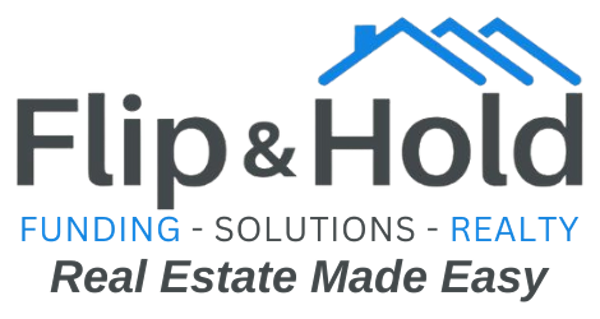So, you’ve purchased your first rental property with Flip & Hold Funding’s capital, fixed it up, and decided to keep it as a long-term rental. The big question now: How do you put systems in place to maximize efficiency and scale your rental business?
Let’s break down the core team members, tools, and processes you’ll need to grow a successful, sustainable portfolio.
1. Decide on Your Management Structure
Before you can scale, you need to determine whether you’ll:
- Build an in-house team
- Outsource key functions
- Use a hybrid approach
There are pros and cons to each method. In-house staff gives you more control, while outsourcing offers flexibility and potentially lower overhead. Many successful landlords use a combination of both.
💡 Tip: Talk to peers, run the numbers, and compare employee costs (including 1099 contractors) with outsourcing rates before deciding.
2. The Property Manager – Your Quarterback
A great property manager is essential. They oversee tenant relationships, maintenance, leasing, and subcontractors. Whether in-house or outsourced, choose wisely — your portfolio’s success depends heavily on this role.
3. Property Management Software – Data is Everything
The right PM software keeps your operation efficient. Look for features such as:
- Rent collection & reporting
- Maintenance request tracking
- Leasing & tenant screening tools
- Lease maturity date reminders
- Building/unit-specific notes
- Customizable daily and monthly reports
Your software should fit your portfolio size and give you easy access to the data that drives your decisions.
4. Leasing Manager – The Gatekeeper of Good Tenants
A leasing manager handles marketing vacancies, screening tenants, and filling units. Bad tenants can cost you thousands, so make sure they:
- Perform thorough background and reference checks
- Review credit history
- Search tenant social media for red flags
The more units you have, the more it makes sense to keep this function in-house to avoid high commission costs.
5. Maintenance Techs – Keep Properties Running Smoothly
Your maintenance staff handles repairs, annual inspections, and tenant requests. They often see tenants more than the property manager, so professionalism is key.
Good techs:
- Keep material costs low by using the same products consistently
- Work efficiently without overspending
- Keep tenants happy, which reduces turnover
Bad techs can waste money, upset tenants, and even steal materials — hire carefully.
6. Turnover Techs – Speed is Profit
Vacancies cost money. Your turnover techs prep units between tenants. The faster they work (without cutting corners), the sooner you can start collecting rent again.
To keep turnovers fast and affordable:
- Do heavy renovations at purchase so turns are lighter
- Standardize unit finishes to simplify ordering and repairs
7. Bookkeeper & Accounting Manager – Keep the Numbers Right
As your portfolio grows, invest in a dedicated bookkeeper. They should:
- Pay bills on time
- Prepare accurate P&L statements
- Keep clean records for your CPA
Sloppy bookkeeping can cause reporting errors and cost you money during tax season.
8. Legal Team – Protect Your Assets
Attorneys are essential not only for purchases and refinances but also for:
- Evictions
- Payment agreements
- Navigating landlord-tenant laws
Decide if you’ll represent yourself in court or hire an attorney, but either way, act quickly to remove non-paying tenants while keeping good tenants happy.
Final Thoughts
This isn’t an exhaustive list of every team member you might need, but it’s the core group to get your rental portfolio up and running smoothly. Focus on building a solid foundation with the right people, processes, and tools and the rest will fall into place.

